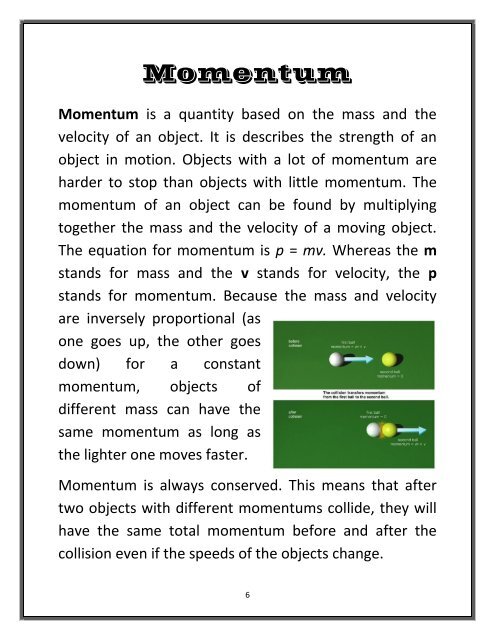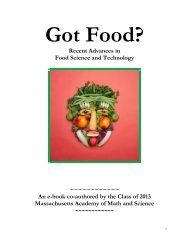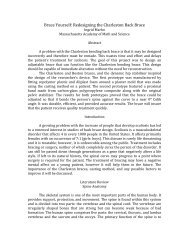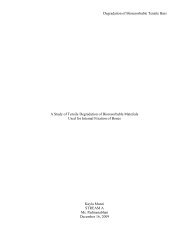The Basics of Newtonian Mechanics - the Scientia Review
The Basics of Newtonian Mechanics - the Scientia Review
The Basics of Newtonian Mechanics - the Scientia Review
You also want an ePaper? Increase the reach of your titles
YUMPU automatically turns print PDFs into web optimized ePapers that Google loves.
Momentum<br />
Momentum is a quantity based on <strong>the</strong> mass and <strong>the</strong><br />
velocity <strong>of</strong> an object. It is describes <strong>the</strong> strength <strong>of</strong> an<br />
object in motion. Objects with a lot <strong>of</strong> momentum are<br />
harder to stop than objects with little momentum. <strong>The</strong><br />
momentum <strong>of</strong> an object can be found by multiplying<br />
toge<strong>the</strong>r <strong>the</strong> mass and <strong>the</strong> velocity <strong>of</strong> a moving object.<br />
<strong>The</strong> equation for momentum is p = mv. Whereas <strong>the</strong> m<br />
stands for mass and <strong>the</strong> v stands for velocity, <strong>the</strong> p<br />
stands for momentum. Because <strong>the</strong> mass and velocity<br />
are inversely proportional (as<br />
one goes up, <strong>the</strong> o<strong>the</strong>r goes<br />
down) for a constant<br />
momentum, objects <strong>of</strong><br />
different mass can have <strong>the</strong><br />
same momentum as long as<br />
<strong>the</strong> lighter one moves faster.<br />
Momentum is always conserved. This means that after<br />
two objects with different momentums collide, <strong>the</strong>y will<br />
have <strong>the</strong> same total momentum before and after <strong>the</strong><br />
collision even if <strong>the</strong> speeds <strong>of</strong> <strong>the</strong> objects change.<br />
6
















